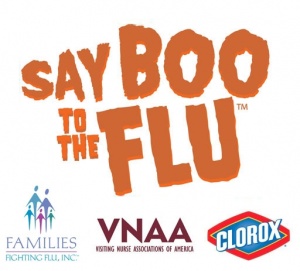Realistic Expectations For Hand Sanitizers In Elementary Schools
I recently listened in to a Webinar related to infectious disease prevention strategies in elementary schools. The lead speaker (Dr. Thomas Sandora) was the principal investigator of a research study that was sponsored by Clorox and published in the Journal, Pediatrics a few months ago. I thought the results were interesting.
Study Design
This study was a randomized, controlled trial of 285 third to fifth graders in a school in Avon, Ohio. The study took place over a two-month period: from March to May, 2006. Half of the classrooms were randomized to the intervention group (which included having the kids apply hand sanitizer before and after lunch, and the teachers perform a sanitary wipe down of all their desks once/day), the other half were observed during their “business as usual” daily routine without sanitizers. The primary outcome measure was “days of school missed due to illness – either upper respiratory or gastrointestinal.” Swabs of surfaces in both the intervention and control groups were taken.
Results
Interestingly, there was no difference in the groups in terms of days of school missed due to upper respiratory type illnesses. There was a small but significant (9%) reduction in gastrointestinal-related illnesses absenteeism in the intervention group. Surface swabs picked up norovirus with higher frequency in the control group classrooms. No MRSA was detected during the study.
Discussion
Upper respiratory tract infections (URIs) are highly contagious, and are commonly spread by droplets in the air as well as surface contact (some viruses and bacteria can survive for 2 hours or more outside the body). Due to an infected child’s continuous contact with their own nasal secretions (sorry for the graphic photo), it is difficult to reduce the spread of URIs through the occasional hand washing or sanitizing. One would have to wash a child’s hands after each time they touched their mouth or nose.
On the other hand, gastrointestinal infections like norovirus are spread via the fecal-oral route, and are therefore not dripped and sneezed all over the place the way URI-causing viruses tend to be. Instead, GI infections are spread when hands are not washed thoroughly after a trip to the bathroom – and then food is touched and ingested.
So it’s not all that surprising that the transmission of GI-related infections were particularly susceptible to this study’s intervention: hand sanitizing before and after lunch, and a daily desk surface wipe.
An interesting point that Dr. Sandora made was that alcohol-based hand sanitizers don’t contribute to antibiotic resistance, because their killing mechanism is not related to antibiotics. I guess it’s like saying that humans don’t become resistant to knife injuries when exposed to attacks with greater frequency.
Conclusions
Hand sanitizer and surface disinfectant strategies may be more effective in reducing the transmission of gastrointestinal illnesses than respiratory tract illnesses in elementary school children. But since compliance is challenging – the total reduction in GI illness transmission remains modest though probably worth the hygiene effort. One glance at the photo above tells you all you need to know.












